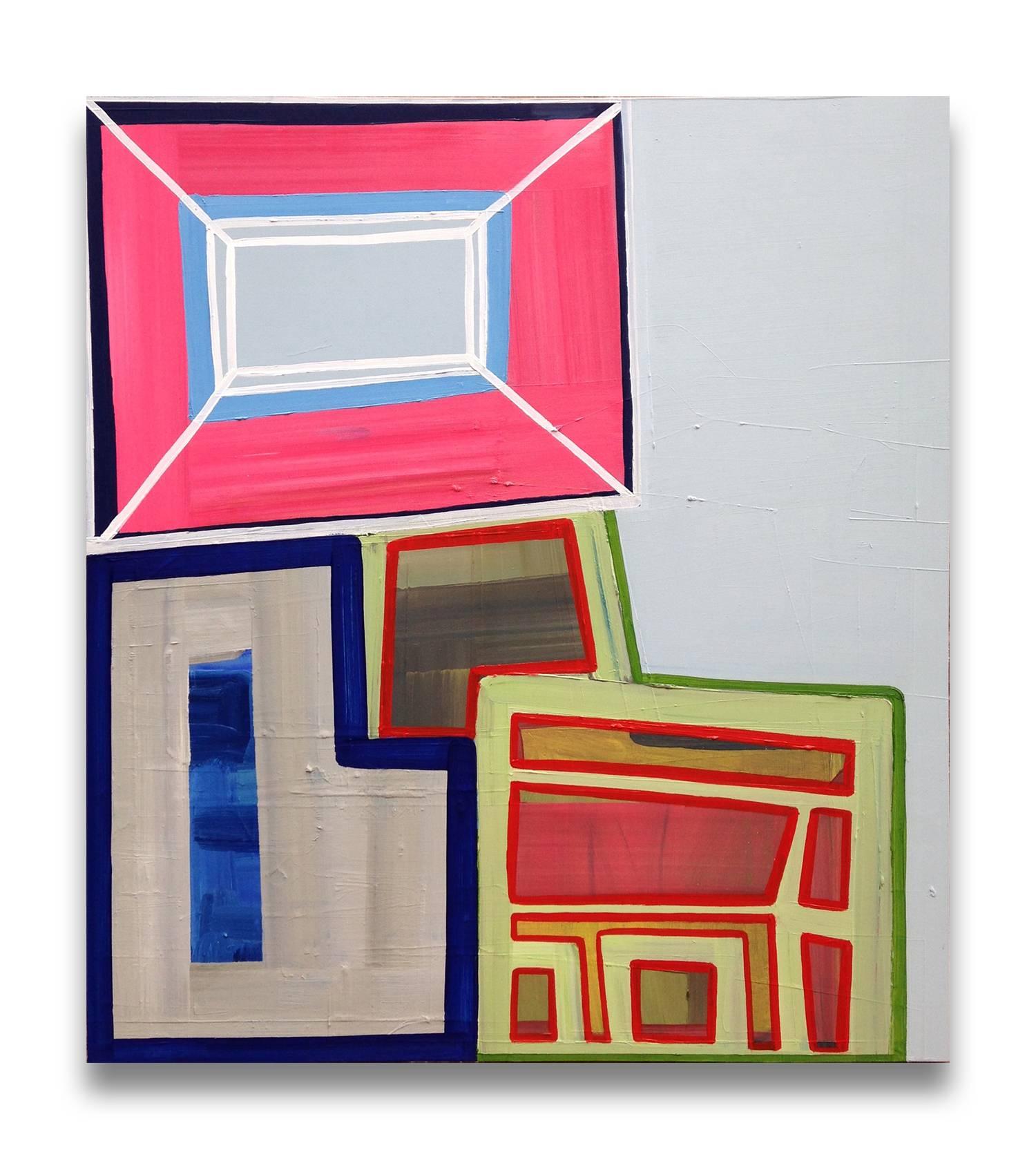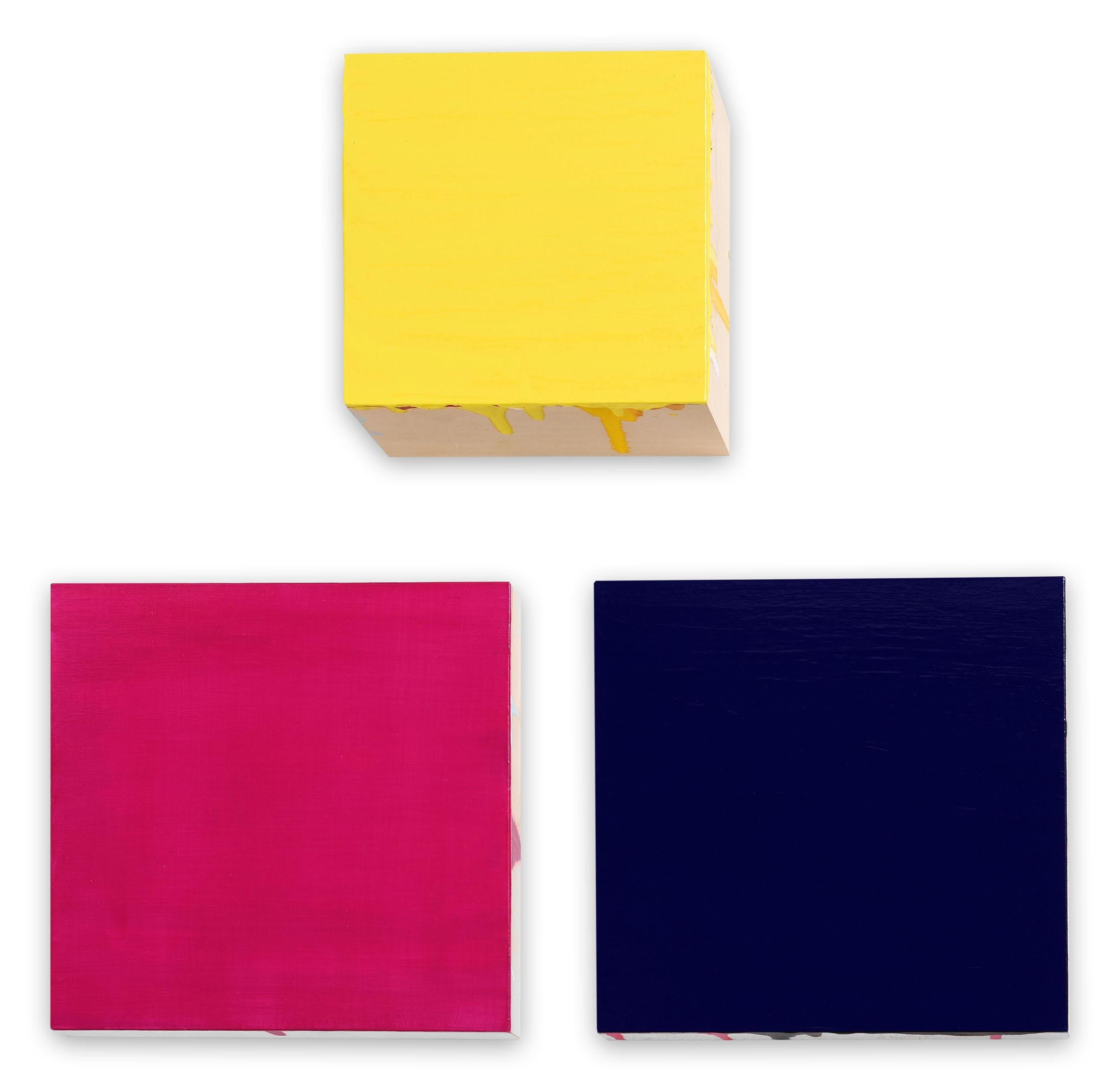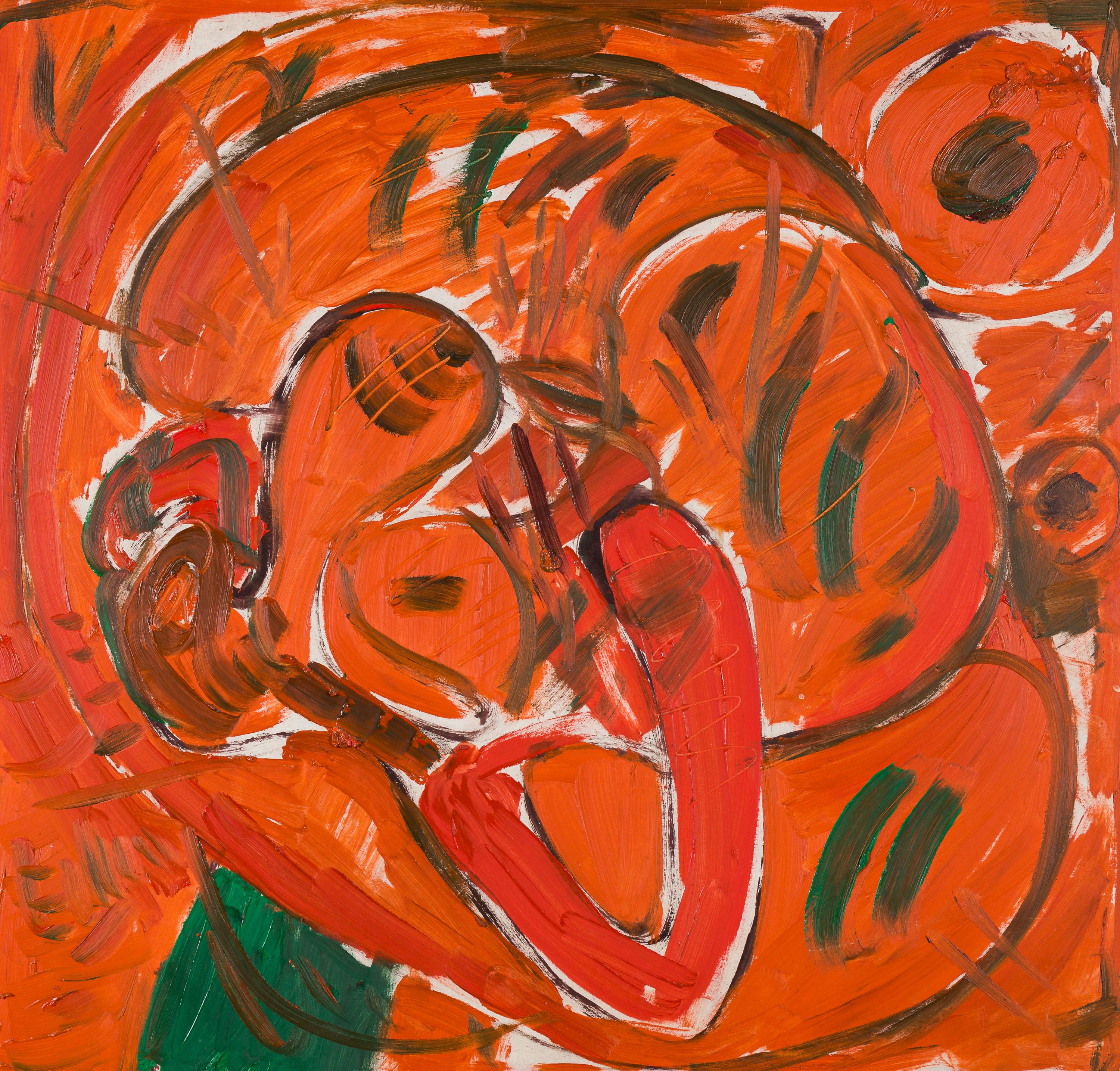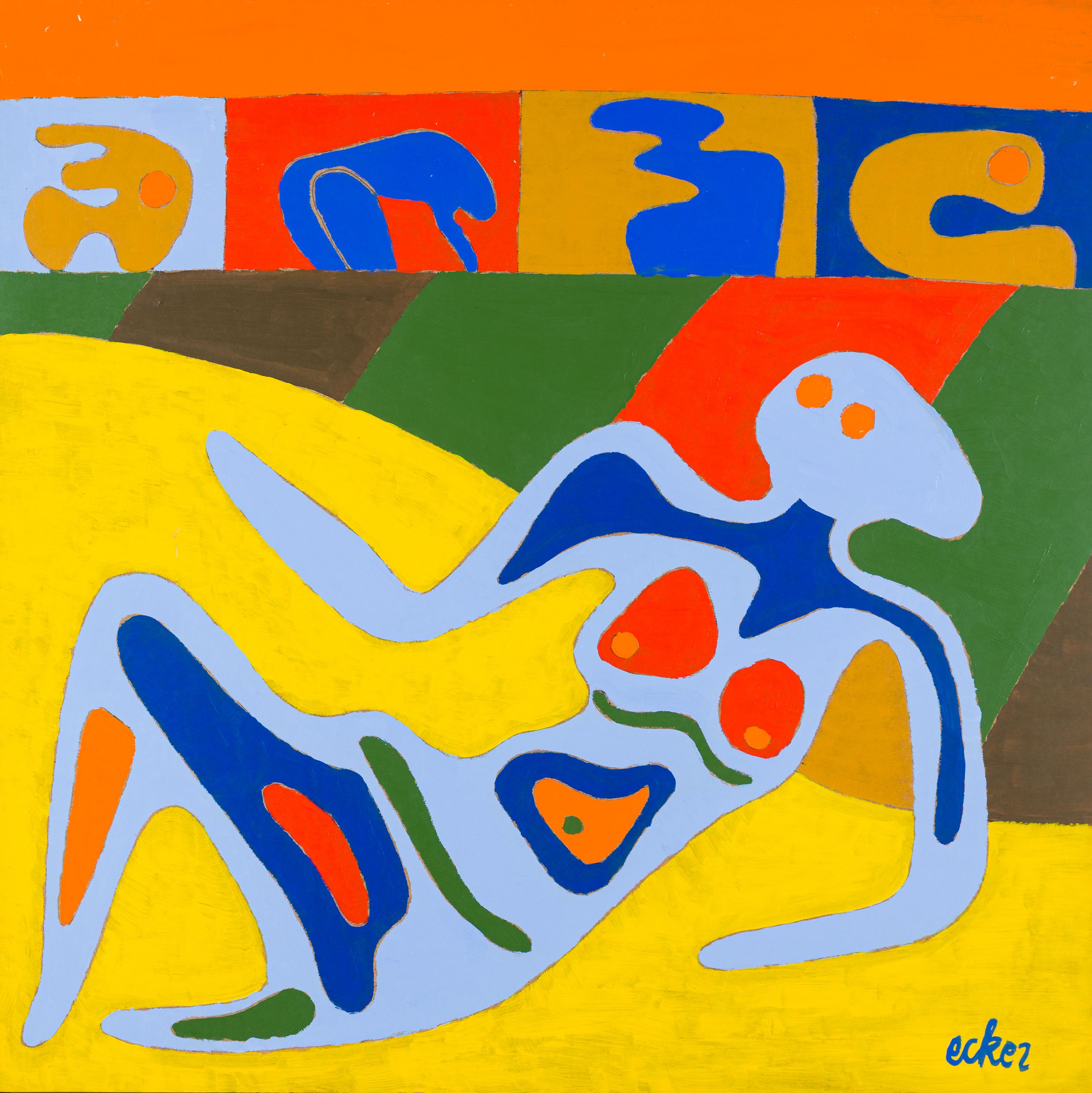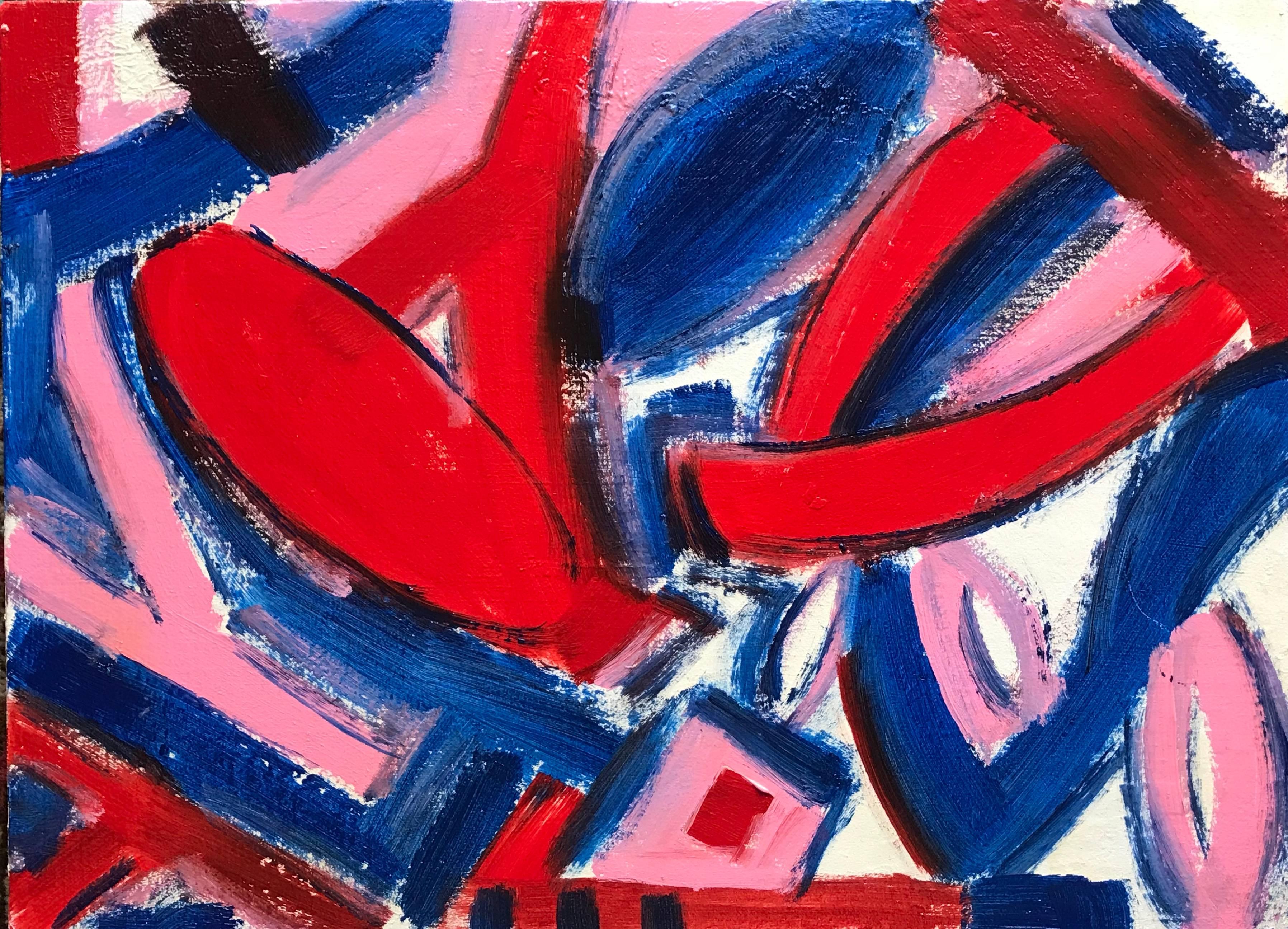Items Similar to Mann und Frau
Want more images or videos?
Request additional images or videos from the seller
1 of 4
Franz EckerMann und Frau
About the Item
Seit seinem frühen Tod 1999 erlebt das Werk von Franz Ecker eine längst fällige Neubewertung, die sich auch in zahlreichen Einzelausstellungen, Katalogen und einem sehenswerten Kinofilm manifestiert. Der extrem produktive Maler hinterließ ein fast unüberschaubares Oeuvre mit einer extremen stilistischen Breite und einer ganzen Reihe von Spitzenwerken, die ihresgleichen in der jüngeren österreichischen Kunstgeschichte suchen und deren Stellenwert noch nicht hinreichend erfasst ist.
Als Franz Ecker 1966 nach dem Studium bei Sergius Pauser mit zwei Staatspreisen nach Leonding zurückkehrt, hat er bereits eine klare abstrakte Formensprache ausformuliert. Als
Inspirationsquelle sind Czeanne und Picasso zu nennen, als Lehrer unbedingt aber auch Martin Polasek. Sie führen zu einer flächenbetonten abstrakten Malerei, die durch exakte farbliche Abstimmung und strenge Komposition eine räumliche Erfahrung auslöst. Ihre stärksten Momente erlebt Franz Eckers Malerei dabei an der Grenze zwischen Gegenständlichkeit und Abstraktion. Nur in der Zeit bis ca. 1975 gibt es dazu auch eine Vielzahl Aquarelle, wobei Ecker dieses Medium für besonders lyrische Arbeiten nutzt.
Wenn Franz Ecker dennoch nicht zum Kanon der Avantgarde der 70er-Jahre gerechnet wird, so deshalb, weil er sich dem Kunstmarkt bis zur Selbstaufgabe verweigert hat. Statt die
Möglichkeiten zu nutzen, die ihm in Wien geboten werden, geht er nach der Akademiezeit wieder zurück nach Linz, das damals für sein Werk weder Verständnis noch Markt bietet. Vom etablierten Kunstbetrieb abgeschnitten, lebt Ecker kompromisslos das prekäre Leben eines einsamen Genies. Ein Künstler-Mythos, der in seinem Fall freilich bittere Realität ist.
Davon unbeeindruckt, erarbeitet sich Ecker eine immer breitere Formensprache innerhalb der klaren Linie der abstrakten Bildauffassung, was er auch mit ständig neuen Signaturformen unterstreicht.
Ende der siebziger Jahre werden seine Arbeiten gestischer und expressiver. Werke wie etwa Eckers „Kafka“ nehmen die „Neuen Wilden“ vorweg. Als diese einige Jahre später als “Rückkehr der Malerei“ gefeiert werden, bemerkt Franz Ecker voller Selbstbewusstsein in einem Interview, dass er hier nicht viel Neues erkennen könne. Er sei wohl immer noch „ein Einäugiger unter Blinden“.
Franz Ecker hat zu diesem Zeitpunkt seinen Stil bereits zu einer stark strukturierten Flächigkeit weiterentwickelt, die öfters mit Keith Haring verglichen wird. Für Museen, Kuratoren, Kunsthistoriker und Sammler hinterlässt Ecker ein Werk, das noch alle Möglichkeit der Deutung, Neubewertung, ja der Entdeckung zulässt.
- Creator:Franz Ecker (1943 - 1999)
- Dimensions:Height: 33.67 in (85.5 cm)Width: 43.51 in (110.5 cm)
- Medium:
- Movement & Style:
- Period:
- Condition:
- Gallery Location:Wien, AT
- Reference Number:1stDibs: LU1782212691072
About the Seller
No Reviews Yet
Vetted Seller
These experienced sellers undergo a comprehensive evaluation by our team of in-house experts.
Established in 1973
1stDibs seller since 2022
5 sales on 1stDibs
- ShippingRetrieving quote...Ships From: Wien, Austria
- Return PolicyA return for this item may be initiated within 7 days of delivery.
More From This SellerView All
- Ohne TitelLocated in Wien, 9Seit seinem frühen Tod 1999 erlebt das Werk von Franz Ecker eine längst fällige Neubewertung, die sich auch in zahlreichen Einzelausstellungen, Katalogen und einem sehenswerten Kinof...Category
Late 20th Century Abstract Abstract Paintings
MaterialsOil, Wood Panel
- NudeLocated in Wien, 9Seit seinem frühen Tod 1999 erlebt das Werk von Franz Ecker eine längst fällige Neubewertung, die sich auch in zahlreichen Einzelausstellungen, Katalogen und einem sehenswerten Kinof...Category
Late 20th Century Abstract Abstract Paintings
MaterialsOil, Wood Panel
- Komposition 3Located in Wien, 9Seit seinem frühen Tod 1999 erlebt das Werk von Franz Ecker eine längst fällige Neubewertung, die sich auch in zahlreichen Einzelausstellungen, Katalogen und einem sehenswerten Kinof...Category
Late 20th Century Abstract Abstract Paintings
MaterialsOil, Wood Panel
- Wooden HeadsLocated in Wien, 9Since Franz Ecker’s early death in 1999 his work has been newly appreciated, what is manifested in numerous exhibitions, catalogues and in the acclaimed film about the artist. He was extremely productive and left behind an almost unmanageable scope of works in various styles. Among them some of the top works that are unparalleled in recent Austrian art history and whose significance has not yet been adequately appreciated. After finishing his studies in 1966 in class of prof. Sergius Pauser and after receiving his two prizes, Franz Ecker moved back to Leonding where he developed his clear, abstract language of forms. Among his sources of inspiration are Cezanne and Picasso, as well as Martin Polasek who was one of his teachers. This led him to painting in a flat and abstract manner, which triggers a spatial experience through its exact color coordination and strict composition. The strongest period in his oeuvre is the time when his paintings are between figuration and abstraction. Only until around 1975 he additionally creates numerous watercolors, even though he restricts this medium to his more lyrical works. If Franz Ecker cannot be included in the avant-garde cannon of the 70’s, it is only because he witheld from presenting his works on the art market. Instead of using the opportunities that were offered to him in Vienna, he returned after his time at the academy to Linz where there was no appreciation nor market for his works. Distanced from the established art business, Ecker lives uncompromisingly the precarious life of a lonely genius. An artist myth, which in his case certainly is a bitter reality. Unimpressed by this, Ecker develops an increasingly broad language of forms within the clear line of abstract pictorial conception, which he emphasizes with constantly new forms of signature. At the end of the seventies his works became more gestural and expressive. His works like “Kafka” anticipate the “Neue Wilden”. When these are celebrated as the “return of painting...Category
Late 20th Century Abstract Abstract Paintings
MaterialsPaint, Oil, Panel, Wood Panel
- PabhobecneLocated in Wien, 9The avant-garde artist Vladimir Sterligov created his own system of forms and symbols here. These, as well as his other constructions, deal with non-representational reality. The two...Category
1920s Modern Abstract Paintings
MaterialsOil, Wood Panel
- Die Benno Kirche - Benno ChurchBy Fritz BaumgartnerLocated in Wien, 9The painter was born in Austrian, but grew up in Munich and died in 2006 at the age of 77. He was an outstanding personality, atypical in the German art landscape. He started on the ...Category
Early 2000s Expressionist Abstract Paintings
MaterialsAcrylic, Wood Panel
You May Also Like
- Topsy Turvy (Abstract Painting)By Ashlynn BrowningLocated in London, GBTopsy Turvy (Abstract Painting) Oil on panel - Unframed Ashlynn Browning's recurring use of grids, networks, and, since 2013, stacked forms, may recall architectural structures, bu...Category
2010s Abstract Abstract Paintings
MaterialsOil, Wood Panel
- Honey Cream Violet Ink (Abstract Painting)By Anya SpielmanLocated in London, GBHoney Cream Violet Ink (Abstract Painting) Oil on Panel - Unframed The dimension of the entire piece (the way it is shown hanging) is approximately 17”X19""""/43.2x48.3cm Dimension...Category
2010s Abstract Expressionist Abstract Paintings
MaterialsOil, Wood Panel
- Fine British Abstract Original Painting SignedBy Robert SomertonLocated in Cirencester, GloucestershireRobert Somerton (British, born 1972) Abstract composition oil on wood pane, unframed 16 x 22 inches signed verso Superb original abstract painting by the contemporary British abstra...Category
21st Century and Contemporary Abstract Expressionist Abstract Paintings
MaterialsOil, Wood Panel
- Mod Abstract Expressionist Modernist Oil Painting Edward Avedisian Color CirclesBy Edward AvedisianLocated in Surfside, FLEdward Avedisian ( 1936-2007 ) 12 X 8.5 Oil paint on wood panel This is not signed on front. It bears his name verso. Provenance: Hudson, N.Y. estate of noted Art Collector Albert B...Category
1960s Abstract Expressionist Landscape Paintings
MaterialsOil, Wood Panel
- FurryBy Emily RozLocated in New York, NYOil on wood panel 21x21 Emily Roz is known for her (sometimes lurid) hyper-detailed oil paintings and drawings depicting scenes from nature. Her macroscopic paintings referencing th...Category
2010s Abstract Abstract Paintings
MaterialsOil, Wood Panel
- As listening IBy Christine NobelLocated in Montreal, QuebecChristine Nobel’s paintings in Between the Notes share a faithfulness to a soft colour palette of sky blues, mauves, peaches, roses and whites, reminiscent of a pastel-coloured youth...Category
2010s Abstract Abstract Paintings
MaterialsOil, Wood Panel
